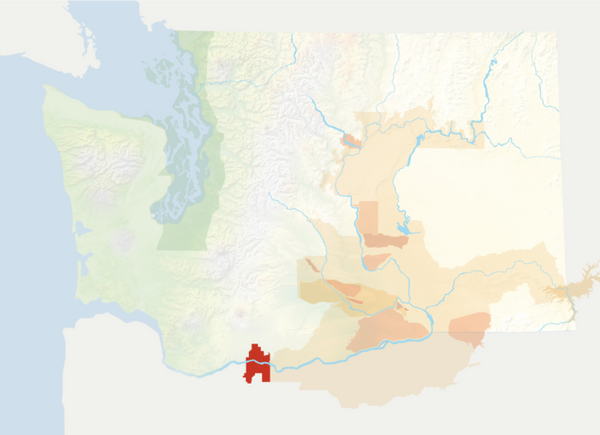
Columbia Gorge AVA
The Columbia Gorge is named after a 40-mile long gorge that the Columbia River carved into basalt bedrock.
Key statistics
2004
Total vineyard acreage: 950 Washington acreage: 381
10-36 inches

Characteristics
About the region
Established in 2004, the Columbia Gorge AVA is the state’s westernmost appellation east of the Cascade Mountains. A shared appellation with Oregon, the 40-mile long Columbia Gorge is notable for its diversity, with very dry regions to the east as well as areas to the west that receive so much rain they are able to dry farm – an extreme rarity in eastern Washington.
This region’s proximity to the Cascade crest, which lies to the west, results in radically different microclimates. Driving west to east, annual rainfall decreases approximately one inch per mile. The western section of the appellation receives an average of 36 inches (90cm) of rainfall annually; the eastern section a mere 10 (25cm).
As a result, western vineyards have more of a maritime influenced climate, ideal for cool climate grapes; eastern vineyards have a continental climate, better suited to warm weather varieties.
Climatically, the Columbia Gorge is also notable for its near-constant winds due to pressure differentials caused by cool air from the Pacific Ocean meeting warm arm from eastern Washington’s deserts. Most vineyards on the Washington side of the appellation are planted on south-facing slopes in order to receive as much sunshine as possible and to protect from wind.
Notably, the Columbia Gorge is one of eastern Washington’s only growing regions that lies outside of the Columbia Valley appellation, which it abuts.

